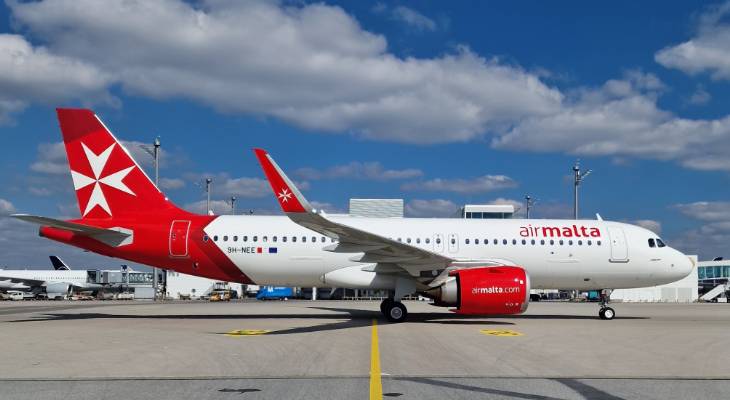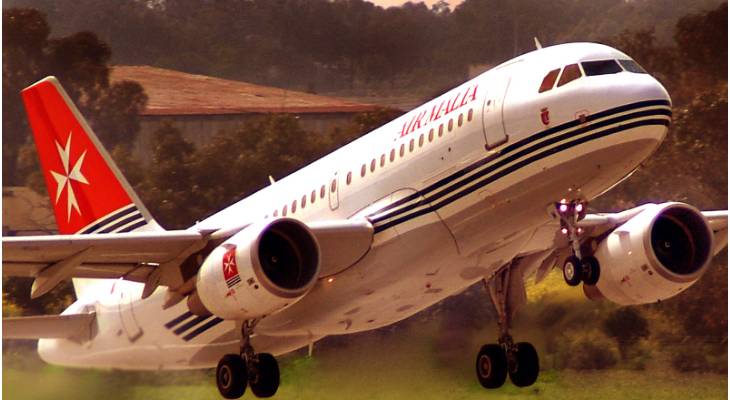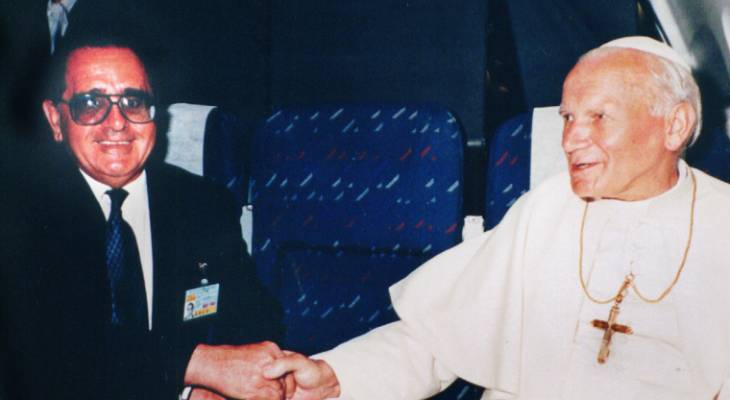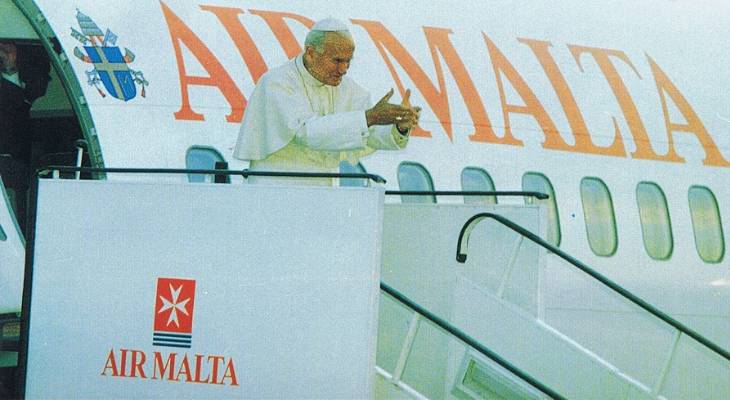In a fitting end to Air Malta’s half a century of serving the Maltese travelling community, its final flight, landing on the island at 12.40am on 31st March from London Heathrow, is the very same as its inaugural service on 1st April 1974.
For this last ever service, which also happens to be the outgoing national carrier’s flagship route, Air Malta Captain Kevin Camilleri and First Officer Glen Fenech will be on flight deck, and as expected, this flight is fully booked up.
The news of Air Malta’s closure came in October 2023, while it was also announced that a new national carrier, KM Malta Airlines, will be taking over, putting an end to speculation as to the fate of Air Malta.

Air Malta welcomes its fifth Airbus A320neo registered 9H-NEE in March 2023
Air Malta’s beginnings
The national carrier was registered as a limited liability company on 30th March 1973. Dom Mintoff, then Prime Minister and acting as Minister for Civil Aviation granted Air Malta an Air Service Licence subject to the condition that the Government of Malta, Maltese citizens or companies established under Maltese law (as well as under the control of Maltese citizens) must maintain substantial ownership and full control of the airline, at all times.
The airline was formed with the aid of Pakistan International Airlines (PIA) with a share capital of Lm750,000 of which Lm530,000 were issued, 51 per cent by Air Malta and 20 per cent by PIA. The remaining 29 per cent of the capital share initially went unclaimed.
The first Boeing B720B for Air Malta, registered AP-AMG, touched down in Malta on 29th March 1974 ahead of the airlines inaugural flights to be taking place on 1st April 1974. Flying directly from Karachi on a seven-hour and 15-minute non-stop flight, the aircraft was flown by Swedes Captain Sven Swedberg and First Officer Kjell Bleckart, together with Englishman Flight Engineer Derek Graham.
According to media reports at the time, an Air Malta Captain was being paid a basic salary of £700 per month, while the First Officer’s pay was £400.
Air Malta’s first scheduled flights were to London, Birmingham, Manchester, Rome, Frankfurt, Paris and Tripoli. During 1974, Air Malta carried a total of 121,821 passengers and 1,368 freight tons, while at its peak it carried upward of 10 million passengers through its chartered and scheduled flights in one year.

Airbus A320 with Air Malta Livery by Gino Galea
By 1978, top management at Air Malta was finally in the hands of Maltese nationals, except for the Flight Operations and Engineering Departments, where it was deemed that foreign experts were still necessary. However, over the next few years, these roles would be filled with locals.
Air Malta purchased its first aircraft, a Boeing 720B from Western Airlines, which was delivered to the islands on 14th April 1978.
In 1980, Malta’s Government saw its stake in Air Malta grow even bigger, after it exercised its right to purchase the 20 per cent share held by PIA, bringing its shareholding to 96.4 per cent.
The following year marked a significant development in the airline’s operations. The significance and size of Air Malta is often forgotten in today’s context, especially when considering that it had agreements in place with Singapore International Airlines to run a service of seasonal flights from Sydney and Melbourne to Malta. Considering the number of locals who had emigrated to Australia, the route was deemed relevant. Whether it was profitable is an entirely different story, however.
Commercial dealings
Flexing its commercial prowess, 1981 also saw Air Malta operate its own subsidiary, Holiday Malta (UK). It also held investments in Medisle Holidays Complex in Pembroke, Selmun Palace Hotel, Tigne Development Company Limited (developers of the Crowne Plaza Hotel), Hal-Ferh Holiday Complex, White Rocks Holiday Complex, Air Supplies and Catering Company, Holiday Service Company Limited, Middle Sea Insurance and Mediterranean Aviation Company Limited (Medavia).
As the world began to embrace computers, the internet and digitalisation, 1984 marked the introduction of the computerisation of Air Malta’s passenger reservations service, ticketing, fare quotation and departure control after an agreement was signed with Aer Lingus.
In addition to the airline’s ground handling services, freight carrying services and flight operation services, 1993 saw the introduction of Air Malta leasing aircraft to other companies, after Parliament passed a bill amending the Civil Aviation Act.
1993 was a pivotal year for the airline, having carried 13.5 million passengers on its scheduled and chartered flights, as well as the inauguration of its Ewropa Lounge at Malta International Airport. In June of the same year, it began a direct service to Dubai, hailed as Air Malta’s longest scheduled route ever. This route, while having been cut and reintroduced several times throughout the years, remains a significantly important one due to the indirect air connections it provides and due to the commercial significance of Dubai. Today, it is operated by Emirates and Turkish Airlines (with Cyprus and Istanbul connections, respectively).
By 1993, Air Malta employed more than 2,000 personnel, supporting 9,700 jobs or 7.7 per cent of the gainfully occupied population of Malta.
The company’s direct and indirect contribution to Malta’s GDP was estimated at a staggering 12 per cent of the total.
During it’s first 25 years of flying, the national carrier used over sixty aircraft, and served 54 destinations in Europe, North Africa, the Middle East, the Arabian Gulf, Australia and America.
Further concentrating on commercial developments, the following year saw the inauguration of Air Malta Cargo Systems and Transhipment Centre.
First Air Malta flight services operated by Maltese Captains
In 1985, Air Malta could truly start to be called Malta’s national flag carrier, when local aviation history was made by six Maltese Captains embarking on their maiden flights.
On 8th October 1985, the country saw its first flight with an all-Maltese crew with KM616 to Gatwick. With just over 10 years of flying under the airline’s wing, locals in the aviation space gained the knowledge and skills to oversee the airline’s operations in-house. A truly local affair.
It would be three years later, in 1988, when Air Malta’s first female pilot was certified to fly. Marie Theresa Desira obtained her Commercial Pilot Licence with Instrument rating from the United Kingdom Civil Aviation.
Almost 10 years later, in 1997, Air Malta would see the operation of the first all-female crew, led by Captain Marthese Desira.

Air Malta Chairman Albert Mizzi Hosting Pope John Paul II
Distinguished guests
Over the years, the national carrier has seen its fair share of dignitaries, politicians, personalities, athletes and celebrities.
One of its most distinguished passengers, His Holiness Pope John Paul II, was flown to Malta on an Air Malta flight on 27th May 1990 to the delight of staff and the Maltese general public. He was accompanied by the United Nations Secretary-General at the time, Javier Perez de Cuellar.

Pope John Paul II on board Air Malta plane (1990) / Photo by TVM
He was followed by another two Pontiffs in later years, Pope Benedict XVI and Pope Francis.
Modernisation
In it’s 50-year history, Air Malta moved with the times and modernised its services in accordance with new industry standards.
One major development which began in the early 2000s was the switch over from Boeing to Airbus, with 30th March 2008 marking the end of the national carrier’s Boeing fleet.
As for its B2C-facing services, 2007 was the year when its online portal and internet booking engine was launched. A few years later, in 2012, the airline underwent a re-branding process to promote Valletta’s bid as Europe’s Capital of Culture in 2018.
Despite several restructuring efforts, a 2004 capital-injection, and a holistic plan to make it more competitive – including a significant cost-cutting initiative which saw the carrier introduce its now infamous bezzun as an in-flight meal – it was not meant to be, and the airline continued to struggle financially.
Indeed, 2019 saw the setting up of Malta MedAir, which took over Air Malta’s most lucrative asset: landing rights at major airports around Europe valued at €58 million. And while in 2019 the company registered a profit for the first time in 18 years of €1.2 million, the ensuing pandemic and a refusal by the European Commission to approve a second round of capital injection from the Government meant the chapter on Air Malta would come to a close.
And, while the recent memory of Air Malta is far different to its earlier years, when it had flight agreements for services to major cities like Sydney, Melbourne and New York, Air Malta’s 50-year history will remain etched into the memory of Malta’s history.
Main Image:1980s Air Malta fleet
